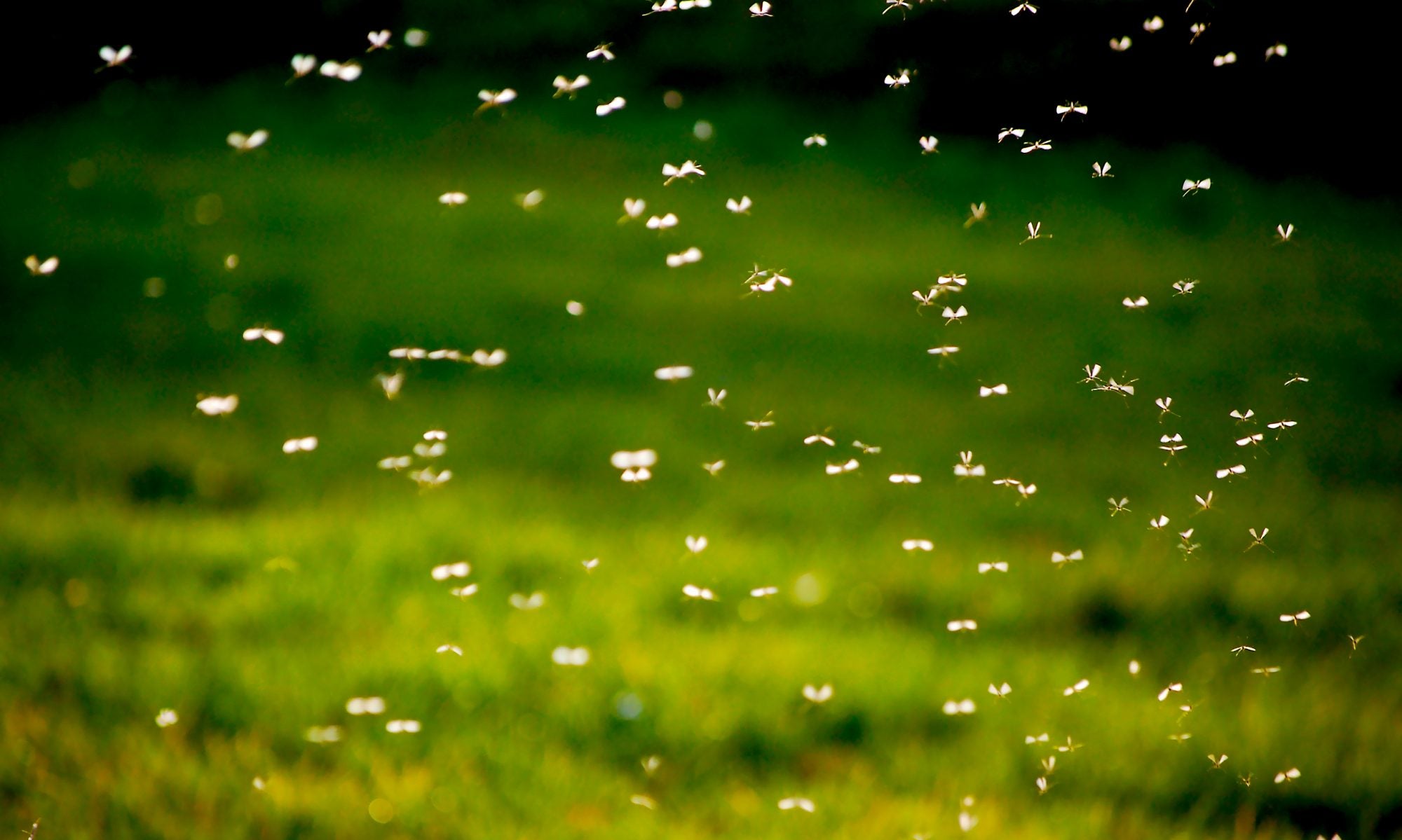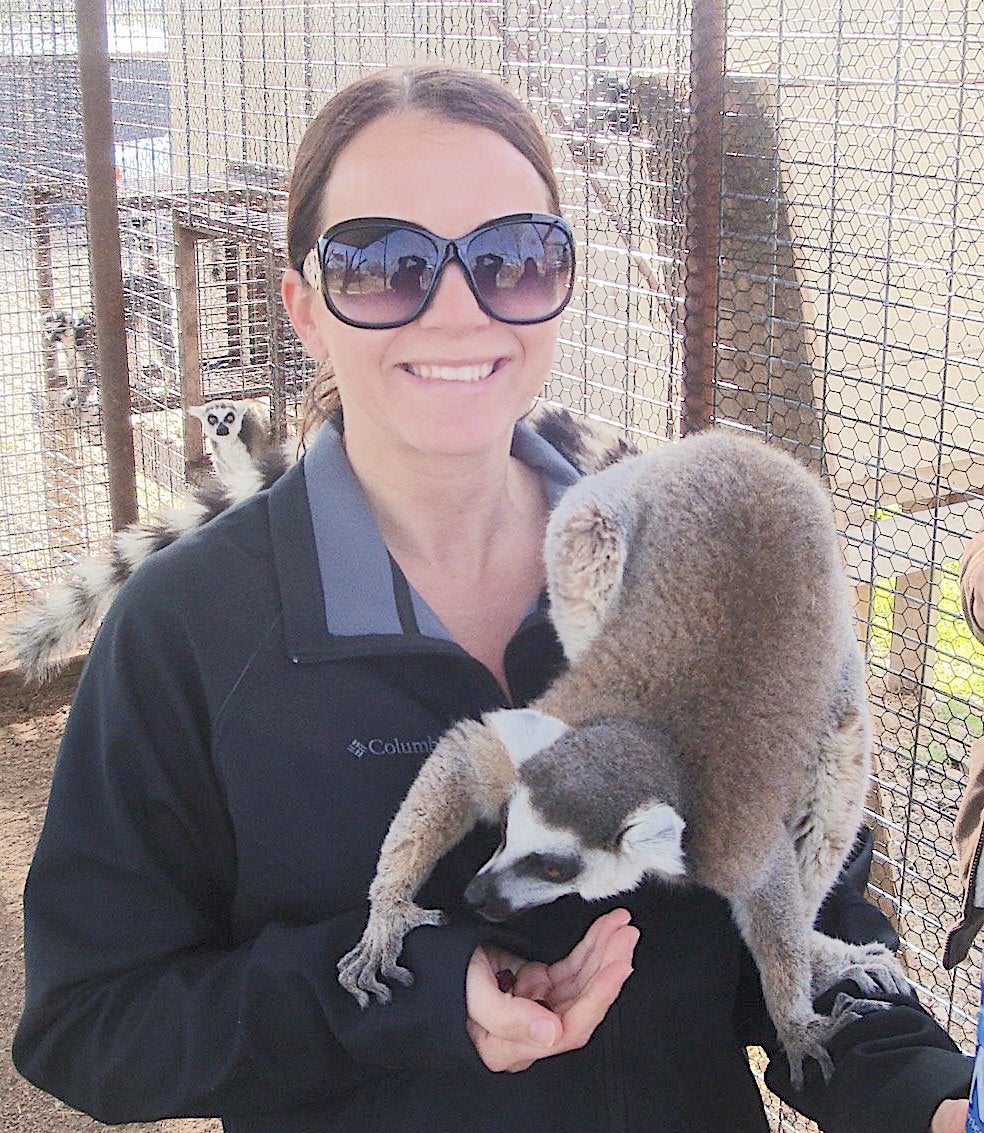Publications
Complete List in Google Scholar.
Complete list in NCBI My Bibliography.
Moore AJ, Van Rompay KKA, Louie W, Watanabe JK, An Sunny, Leung R, Usachenko JL, Chu PN, Olstad KJ, McCoyCS, Campos RK, Weaver SC, Rossi SL, Coffey LL*. 2025. Rhesus macaques model human Mayaro virus disease and transmit to Aedes aegypti mosquitoes. bioRxiv. Link.
Liu H, Ramirez BM, Wong TS, Weiss CM, Lloyd KCK, Gong Q, Coffey LL. 2025. Severe acute respiratory syndrome coronavirus 2 variant infection dynamics and pathogenesis in transgenic K18-hACE2 and inbred immunocompetent C57BL/6J mice. Viruses. Link
Li A, Coffey LL, Mohr EL, Raper J, Chahroudi A, Ausderau KK, Aliota MT, Friedrich TC, Ritzy AM, Koenig MR, Golos TG, Jaeger HK, Roberts VHJ, Lo JO, Smith JL, Hirsch AJ, Streblow DN, Newman CM, O’Connor DH, Lackritz EM, Van Rompay KKA, Adams Waldorf KM, on behalf of the Zika Expert Workgroup. 2025. Role of non-human primate models in accelerating research and developing countermeasures against Zika virus infection. Lancet Microbe. Link.
Weber WC, Streblow DN, Coffey LL. Chikungunya virus vaccines: A review of IXCHIQ and PXVX0317 from pre-clinical evaluation to licensure. 2024. BioDrugs. Link.
Liu H, Brostoff T, Ramirez A, Wong T, Rowland DJ, Heffner M, Flores A, Willis B, Evans JJ, Lanoue L, Lloyd KCK, Coffey LL. Establishment and characterization of an hACE2/hTMPRSS2 knock-in mouse model to study SARS-CoV-2. Frontiers in Immunology. 2024. Link.
Moadab G, Pittet F, Bennett JL, Taylor CL, Fiske O, Singapuri A, Coffey LL, Van Rompay KKA, Bliss-Moreau E. Prenatal Zika virus infection has sex-specific effects on infant physical development and mother-infant social interactions. 2023. Science Translational Medicine. Link.
Ball EE, Bennett J , Keesler RI , Van Rompay KKA , Coffey LL , Bliss-Moreau E. Prenatal Zika virus exposure is associated with lateral geniculate nucleus abnormalities in juvenile rhesus macaques. 2023. Neuroreport. Link.
Louie W, Ramirez AL, Leung R, Mack LK, Kelly ET, Attardo GE, Coffey LL. Microbial exposure across life reduce susceptibility of Aedes aegypti to Zika virus by enhancing blood digestion and limiting midgut cell infection. 2023. Preprint. Link.
Plancarte M , Kovalenko G , Baldassano J , Ramírez AL , Carrillo S , Duignan PJ , Goodfellow I , Bortz E , Dutta J , van Bakel H, Coffey LL. Human influenza A virus H1N1 in marine mammals in California, 2019. 2023. PLoS One. Link.
Weiss CM, Liu H, Ball EE, Hoover AR, Wong TS, Wong CF, Lam S, Hode T, Keel MK, Levenson RL, Chen WR, Coffey LL. N-dihydrogalactochitosan reduces mortality in a lethal mouse model of SARS-CoV-2. 2023.PLoS One. Link.
Ball EE, Weiss CM, Liu H, Jackson K, Keel MK, Miller CJ, Van Rompay KKA, Coffey LL, Pesavento PA. Severe acute respiratory syndrome coronavirus 2 vasculopathy in a Syrian golden hamster model. American Journal of Pathology. 2023. Link.
Evans TS, Tan CW, Aung O, Phyu S, Lin H, Coffey LL, Toe AT, Aung P, Aung TH, Aung NT, Weiss CM, Thant KZ, Htun ZT, Murray S, Wang LF, Johnson CK, Thu HM. Exposure to diverse sarbecoviruses indicates frequent zoonotic spillover in human communities interacting with wildlife. 2023. International Journal of Infectious Diseases. Link.
Haudenschild AK, Christiansen BA, Orr S, Ball EE, Weiss CM, Liu H, Fyhrie DP, Yik JHN, Coffey LL, Haudenschild DR. Acute bone loss following SARS-CoV-2 infection in mice. 2023. Journal of Orthopaedic Research. Link.
Van Rompay KKA, Coffey LL, Yee JA, Singapore A, Stuart J, Lanteri MC, Santa Maria F, Lu K, Singh I, Bakkour S, Stone M, Williamson PC, Muench MO, Busch MP, Simmons G. Plasma transfusion-transmission of Zika virus in mice and macaques. 2023. Transfusion. Link.
Smiley Evans T, Aung O, Cords O, Coffey LL, Won T, Weiss CM, Thein Maw M, Yee JA, Venkateswaran K, Venkateswaran N, Nham P, Van Rompay KKA, Morris MK, Oceguera L, Werthimer W, Hanson C, Valitutto M, Tun KYN, Win YT, Thein WZ, Murray S, Thu HM, Johnson CK. Sylvatic transmission of chikungunya virus among nonhuman primates in Myanmar. 2022. Emerging Infectious Diseases. Link.
Danforth ME, Snyder RE , FeiszliT , Bullick T, Messenger S , Hanson C , Padgett K , Coffey LL , Barker CM , Reisen WK , Kramer VL. Epidemiologic and Environmental Characterization of the Re-emergence of St. Louis Encephalitis Virus in California, 2015-2020. 2022. PLoS Neglected Tropical Diseases. Link.
Van Rompay KKA, Olstad KJ, Sammak RL, Dutra J, Watanabe JK, Usachenko JL, Immareddy R, Roh JW, Verma A, Lakshmanappa YS, Schmidt BA, Germanio CD, Rizvi N, Liu H, Stone M, Simmons G, Dumont LJ, Allen AM, Lockwood S, Pollard RE, de Assis RR, Yee JL, Nham PB, Ardeshir A, Deere JD, Patterson J, Jain A, Felgner PL, Coffey LL, Iyer SS, Hartigan-O Connor DJ, Busch MP, Reader JR. Early post-infection treatment of SARS-CoV-2 infected macaques with human convalescent plasma with high neutralizing activity had no antiviral effects but moderately reduced lung inflammation. 2022. PLoS Pathogens. Link.
Ball EE, Pesavento PA, Van Rompay KKA, Keel MK, Singapuri A, Gomez-Vasquez JP, Dudley DM, O Connor D, Breitbach ME, Maness N, Schouest B, Panganiban A, Coffey LL. Zika virus persistence in the male macaque reproductive tract. 2022. PLoS Neglected Tropical Diseases. Link.
Beckman D, Seelke AMH , Bennett J, Dougherty P, Van Rompay KKA, Keesler RI, Pesavento PA, Coffey LL, Morrison JH, Bliss-Moreau E. Neuroanatomical abnormalities in a nonhuman primate model of congenital Zika virus infection. 2022. eLife. Link.
Kim I-J, Lanthier P, Clark M, De La Barrera R, Tighe M, Szaba F, Travis K, Low-Beer T, Cookenham T, Lanzer K, Schneck A, Bernacki D, Johnson D, Ross C, Tardif S, Layne-Colon D, Mdaki S, Dick E, Chuba C, Gonzalez O, Brasky K, Dutton J, Rutherford J, Coffey LL, Singapuri A, Sanchez San Martin C, Chiu CY, Thomas S, Modjarrad K, Patterson J, Blackman M. Efficacy of an inactivated Zika vaccine against virus infection during pregnancy in mice and marmosets. 2022. NPJ Vaccines. Link.
Louie, W, Coffey LL. Microbial composition in larval water enhances Aedes aegypti development but reduces transmissibility of Zika virus. 2021. mSphere. Link.
Verma A, Hawes CE, Yashavanth SL, Schmidt BA, Roh JW, Joseph J, Louie W, Liu H, Ma Z-M, Watanabe JK, Usachenko JL, Immareddy R, Sammak RL, Pollard R, Reader R, Olstad KJ, Coffey LL, Kozlowski PA, Hartigan-O’Connor DJ, Nussenzweig M, Van Rompay KKA, Morrison JH, Iyer SS. Monoclonal antibodies protect aged rhesus macaques from SARS-CoV2 induced immune activation. 2021. Cell Reports. Link.
Liu H, Plancarte M, Ball EE, Weiss CM, Gonzales-Viera O, Holcomb K , Min Ma Z, Allen AM , Reader JR, Duignan PJ, Halaska B, Khan Z, Kriti D, Dutta J, van Bakel H, Jackson K, Pesavento PA , Boyce WM, Coffey LL. Respiratory tract explant infection dynamics of influenza A virus in California sea lions, northern elephant seals, and rhesus macaques 2021. Journal of Virology. Link.
Yiu G, Thomasy SM, Casanova MI, Rusakevich A, Keesler RI, Watanabe J, Usachenko J, Singapuri A, Ball EE, Bliss-Moreau E, Guo W, Webster H, Singh T, Permar S, Ardeshir A, Coffey LL, Van Rompay KK. Evolution of ocular defects in infant macaques following in utero Zika virus infection. 2020. JCI Insight. Link.
Collette NM , Lao VHI, Weilhammer DR, Zingg B, Cohen SD, Hwang M, Coffey LL , Grady SL, Zemla AT, Borucki MK. Single amino acid mutations affect Zika virus replication in vitro and virulence in vivo. 2020 Virology. Link.
Weiss CM, Liu H, Riemersma KK, Ball EE, Coffey LL. Engineering a Fidelity-Variant Live-Attenuated Vaccine for Chikungunya Virus. 2020. NPJ Vaccines. Link.
Lemos D, Stuart JB, Louie W, Singapuri A, Ramírez AL, Watanabe J, Usachenko J, Keesler RI, Sanchez-San Martin C, Li T, Martyn C, Oliveira G, Saraf S, Grubaugh ND, Andersen KG, Thissen J, Allen J, Borucki M, Tsetsarkin KA, PletnevAG, Chiu CY, Van Rompay KKA, Coffey LL. 2020. Two Sides of a Coin: a Zika Virus Mutation Selected in Pregnant Rhesus Macaques Promotes Fetal Infection in Mice but at a Cost of Reduced Fitness in Nonpregnant Macaques and Diminished Transmissibility by Vectors. Journal of Virology. Link.
Swetnam DM, Stuart JB, Young K, Maharaj PD, Fang Y, Garcia S, Barker CM, Smith K, Godsey MS, Savage HM, Barton V, Bolling BG, Duggal N, Brault AC, Coffey LL. 2020. Movement of St. Louis Encephalitis Virus in the Western United States, 2014- 2018. PLoS Neglected Tropical Diseases. Link.
Young KI, Medwid JT, Azar SA, Huff RM, Drumm H, Coffey LL, Pitts RJ, Buenemann M, Perera D, Hanley KA. 2020. Identification of Mosquito Bloodmeals Collected in Diverse Habitats in Malaysian Borneo Using COI Barcoding. Tropical Medicine and Infectious Disease. Link.
Van Rompay KKA, Coffey LL, Kapoor T, Gazumyan A, Keesler RI, Jurado A, Peace A, Agudelo M, Watanabe J, Usachenko J, Singapuri A, Immareddy R, Ardeshir A, Stuart JB, Bournazos S, Ravetch JV, Balderes PJ, Lorenz IC, Esswein SR, Keeffe JR, Bjorkman PJ, Wang Q, Rice CM, MacDonald MR, Nussenzweig MC, Robbiani DF. 2020. A Combination of Two Human Monoclonal Antibodies Limits Fetal Damage by Zika Virus in Macaques. Proceedings of the National Academy of Sciences, USA. Link.
Van Rompay KKA, Keesler RI, Ardeshir A, Watanabe J, Usachenko J, Singapuri A, Cruzen C, Bliss-Moreau E, Murphy AM, Yee JL, Webster H, Dennis M, Singh T, Heimsath H, Lemos D, Stuart J, Morabito KM, Foreman BM, Burgomaster KE, Noe AT, Dowd KA, Ball E, Woolard K, Presicce P, Kallapur S, Permar SR, Foulds KE, Coffey LL, Pierson TE, Graham BS. 2019. DNA Vaccination Before Conception Protects Zika Virus–Exposed Pregnant Macaques Against Prolonged Viremia and Improves Fetal Outcomes. Science Translational Medicine. Link.
Riemersma KK, Coffey LL. Chikungunya Virus Populations Experience Diversity-Dependent Attenuation and Purifying Intra-Vector Selection in Californian Aedes aegypti Mosquitoes. 2019. Public Library of Science Neglected Tropical Diseases. Link.
Swei A, Couper LI, Coffey LL, Durrell K, Bennett S. Patterns, Drivers, and Challenges of Vector-Borne Disease Emergence. 2019. Vector-Borne and Zoonotic Diseases. Link.
Borucki MK, Collette NM, Coffey LL, Van Rompay KKA, Hwang MH, Thissen JB, Allen JE, Zamla AT. Multiscale Analysis for Patterns of Zika Virus Genotype Emergence, Spread, and Consequence. 2019. Public Library of Science One. Link.
Robbiani DF, Olsen PC, Costa F, Wang Q, Oliveira TY, Nery N, Aromolaran A, do Rosário MS, Sacramento GA, Cruz JS, Khouri R, Wunder EA, Mattos M, de Paula Freitas B, Sarno M, Archanjo G, Daltro D, Carvalho GBS, Pimentel K, de Siqueira IC, de Almeida JRM, Henriques DF, Lima JA, Vasconcelos PFC, Schaefer-Babajew D, Azzopardi SA, Bozzacco L, Gazumyan A, Belfort R, Alcântara AP, Carvalho G, Moreira L, Araujo K, Reis MG, Keesler RI, Coffey LL, Tisoncik-Go J, Gale M, Rajagopal L, Adams Waldorf KM, Dudley DM, Simmons HA, Mejia A, O’Connor DH, Steinbach RJ, Haese N, Smith J, Lewis A, Colgin L, Roberts V, Frias A, Kelleher M, Hirsch A, Streblow DN, Rice CM, MacDonald MR, de Almeida ARP, Van Rompay KKA, Ko AI, Nussenzweig MC. 2019. Risk of Zika Microcephaly Correlates with Features of Maternal Antibodies. Journal of Experimental Medicine. Link.
Maness NJ, Schouest B, Singapuri A, Dennis M, Gilbert MH, Bohm RP, Schiro F, Aye PP, Baker K, Van Rompay KKA, Lackner AA, Bonaldo MC, Blair RV, Permar SR, Coffey LL, Panganiban AT, Magnani D. 2019. Postnatal Zika Virus Infection of Nonhuman Primate Infants Born to Mothers Infected with Homologous Brazilian Zika Virus. Scientific Reports. Link.
Grubaugh ND, Gangavarapu K, Quick J, Matteson NL, Goes De Jesus J, Main BJ, Tan AL, Paul LM, Brackney DE, Grewal S , Gurfield N, Van Rompay KKA, Isern S, Michael SF, Coffey LL, Loman NJ, Andersen KG. 2019. An Amplicon-Based Sequencing Framework for Accurately Measuring Intrahost Virus Diversity Using PrimalSeq and iVar. Genome Biology. Link.
Riemersma K, Steiner C, Singapuri A, Coffey LL. 2018. Chikungunya Virus Fidelity Variants Exhibit Differential Attenuation and Population Diversity in Cell Culture and Adult Mice. Journal of Virology. Link.
Diaz A, Coffey LL, Burkett-Cadena N, Day JF. 2018. Reemergence of St. Louis Encephalitis Virus in the Americas. Emerging Infectious Diseases . Link.
Keeffe JR, Van Rompay KKA, Olsen PC, Wang Q, Gazumyan A,Azzopardi SA, Schaefer-Babajew D, Lee YE, Stuart JB, Singapuri A, Watanabe J, Usachenko J, Ardeshir A, Saeed M, Agudelo M, Eisenreich T, Bournazos S, Oliveira TY, Rice CM, Coffey LL, MacDonald MR, Bjorkman PJ, Nussenzweig MC, Robbiani DF. 2018. A Combination of Two Human Monoclonal Antibodies Prevents Zika Virus Escape Mutations in Non-human Primates. Cell Reports . Link.
Dudley DM, Van Rompay KK, Coffey LL, Ardeshir A, Keesler RI, Bliss-Moreau E, Grigsby PL, Steinbach RJ, Hirsch AJ, MacAllister RP, Pecoraro HL, Colgin LM, Hodge T, Streblow DN, Tardif S, Patterson JL, Tamhankar M, Seferovic M, Aagaard KM, Sánchez-San Martín C, Chiu CY, Panganiban AT, Veazey RS, Wang X, Maness NJ, Gilbert MH, Bohm RP, Adams Waldorf KM, Gale M, Rajagopal L, Hotchkiss CE, Mohr EL, Capuano SV, Simmons HA, Mejia A, Friedrich TC, Golos TG, O’Connor DH. 2018. Miscarriage and Stillbirth Following Maternal Zika Virus Infection in Nonhuman Primates. Nature Medicine . Link.
Coffey LL, Keesler RI, Pesavento PP, Woolard K, Singapuri A, Watanabe J, Cruzen C, Christe KL, Usachenko JU, Yee J, Heng VA, Bliss-Moreau E, Reader JR, von Morgenland W, Gibbons AM, Jackson K, Ardeshir A, Heimsath H, Permar SR, Senthamaraikannan P, Presicce P, Kallapur SG, Linnen JM, Gao K, Orr R, MacGill T, McClure M, McFarland R, Morrison JM, Van Rompay KKA. 2018. Intra-Amniotic Zika Virus Inoculation of Pregnant Rhesus Macaques Produces Fetal Neurologic Disease. Nature Communications. Link
Main BJ, Nicholson J, Winokur OC, Steiner C, Riemersma KK, Stuart J, Takeshita R, Krasnec M, Barker CM, Coffey LL. 2018. Vector competence of Aedes aegypti, Culex tarsalis, and Culex quinquefasciatus from California for Zika virus. PLoS Neglected Tropical Diseases. Link
Steiner CD, Riemersma KK, Stuart JB, Singapuri A, Lothrop HD, Coffey LL. 2018. Scented Sugar Baits Enhance Detection of St. Louis Encephalitis and West Nile Viruses in Mosquitoes in Suburban California. Journal of Medical Entomology. Link.
Prow NA, Mah MG, Deerain JM, Warrilow D, Colmant AMG, O’Brien C, Harrison JJ, McLean BJ, Hewlett E, Piyasena TBH, Hall-Mendelin S, van den Hurk AF, Watterson D, Schulz BL, Webb CE, Johansen CA, Chow WK , Hobson-Peters J, Cazier C, Coffey LL, Faddy HM, Suhrbier A, Bielefeldt-Ohmann H, Hall RA. 2018. New genotypes of Liao ning virus (LNV) in Australia exhibit an insect-specific phenotype. Journal of General Virology, 99(4):596-609. Link
Chiu CY, Coffey LL, Murkey J, Symmes K, Hsieh K, Muradyan A, Sample HA, Wilson MR, Naccache SN, Arevalo S, Somasekar S, Vespa P, Schiller G, Messenger S, Humphries R, Miller S , Klausner J. 2017. Fatal Human Case of Mosquito-Borne St. Louis Encephalitis Virus Infection Diagnosed by Metagenomic Sequencing, California, 2016. Emerging Infectious Diseases, 23(10):1694-1698. Link
Coffey LL, Pesavento PA, Keesler RI, Singapuri A, Watanabe J, Watanabe R, Yee J, Bliss-Moreau E, Cruzen C, Christe KL, Reader JR, von Morgenland W, Gibbons AM, Allen AM, Linnen J, Gao K, Delwart E, Simmons G, Stone M, Lanteri M, Bakkour S, Busch MP, Morrison J, Van Rompay KKA. 2017. Zika Virus Tissue and Blood Compartmentalization in Acute Infection of Rhesus Macaques. PLoS One. 12(1): e0171148. doi:10.1371/journal.pone.0171148. Link
Stone M, Lantern, MC, Bakkour S, Deng X, Galel SA, Linnen JM, Munoz-Jordan JL, Lanciotti RS, Rios M, Gallian P, Musso D, Levi, JE, Sabino EC, Coffey LL, Busch MP. 2017. Analytical Performance of Donor NAT Screening and Diagnostic Real-Time PCR Assays for Detection of Zika Virus RNA. Transfusion. (57): 734–747. Link.
White, GS, Symmes K, Sun P, Fang Y, Garcia S, Steiner C, Smith K, Reisen WK, Coffey LL. 2016. Reemergence of St. Louis Encephalitis Virus, California, 2015. Emerging Infectious Diseases 22(12):2815-2188. Link.
Ball, CL, Light, Y, Koh, C-Y; Wheeler, S, Coffey, LL; Meagher, R. 2016. Quenching of Unincorporated Amplification Signal Reporters (QUASR) in RT-LAMP Enables Bright, Single-Step, Closed-Tube, and Multiplexed Detection of RNA Viruses. Analytical Chemistry . Link.
Wheeler SS, Ball CS, Langevin SA Fang Y, Coffey LL, Meagher R. Surveillance for Western Equine Encephalitis, St. Louis Encephalitis, and West Nile Viruses using Reverse Transcription Loop-mediated Isothermal Amplification. 2016. PLoS One. Link.
Stapleford KA, Coffey LL, Lay S, Duong V, Isakov O, Blanc H, Borderia A, Beaucourt S, Haliloğlu T, Schmitt C, Bonne I, Tal NB, Shomron N, Failloux AB, Buchy P, Vignuzzi M. 2014. Emergence and Transmission of Arbovirus Evolutionary Intermediates with Epidemic Potential. Cell, Host & Microbe, 15:706-716. Link.
Coffey LL, Page BL, Greninger AL, Herring BL, Russell RC, Doggett SL, Haniotis J, Wang C, Deng X, Delwart EL. 2014. Enhanced Arbovirus Surveillance with Deep Sequencing: Identification of Novel Rhabdoviruses and Bunyaviruses in Australian Mosquitoes. Virology Journal, 448:146-158. Link.
Naccache SN, Greninger AL, Lee D, Coffey LL, Phan T, Rein-Weston A, Aronsohn A, Hackett J Jr, Delwart EL, Chiu CY. 2013. The Perils of Pathogen Discovery: Origin of a Novel Parvovirus-Like Hybrid Genome Traced to Nucleic Acid Extraction Spin Columns. Journal of Virology. Link.
Berthet N, Paulous S, Coffey LL, Frenkiel MP Moltini I, Tran C, Matheus S, Ottone C, Ungeheuer M-N, Renaudat C, Caro V, Dussart P, Gessain A, Desprès P. 2012. Resequencing Microarray Method for Molecular Diagnosis of Human Arboviral Diseases. Journal of Clinical Virology. Link.
Coffey LL, Beeharry Y, Borderia AV, Blanc H, Vignuzzi M. 2011. Arbovirus High Fidelity Variant Loses Fitness in Mosquitoes and Mice. Proceedings of the National Academy of Sciences. Link.
Beaucourt S, Borderia AV, Coffey LL, Gnadig NF, Sanz-Ramos M, Beeharry Y, Vignuzzi M. 2011. Isolation of Fidelity Variants of RNA Viruses and Characterization of Virus Mutation Frequency. Journal of Visualized Experiments. Link.
Coffey LL, Vignuzzi M. 2011. Host Alternation of Chikungunya Virus Increases Fitness While Restricting Population Diversity and Adaptability to Novel Selective Pressures. Journal of Virology. Link.
Schneider BS, Soong L, Coffey LL, Stevenson HL, McGee CE, Higgs S. 2010. Aedes aegypti Saliva Alters Leukocyte Recruitment and Cytokine Signaling by Antigen-Presenting Cells during West Nile Virus Infection. PLOS One. Link.
Coffey LL, Vasilakis N, Brault AC, Powers AM, Tripet F, Weaver SC. 2008. Arbovirus Evolution in vivo is Constrained by Host Alternation. Proceedings of the National Academy of Sciences. Link.
Carrara AC, Coffey LL, Aguilar PV, Moncayo AC, Travassos da Rosa A, Nunes MRT, Tesh RB,Weaver SC. 2007. Venezuelan Equine Encephalitis Virus Infection of Cotton Rats. Emerging Infectious Diseases. Link.
Ozden S, Huerre M, Riviere J-P, Coffey LL, Afonso PV, Mouly V, Monredon J, Roger J-C, Amrani M, Yvin J-L, Jaffar M-C, Frenkiel M-P, Sourisseau M, Schwartz O, Butler-Browne G, Desprès P, Gessain A, Ceccaldi P-E. 2007. Human Muscle Satellite Cells as Targets of Chikungunya Virus Infection. PLOS One. Link.
Coffey LL, Crawford C, Miller R, Dee J, Freier J, Weaver SC. 2006. Serologic Evidence of Widespread Everglades Virus Infection of Dogs in Florida. Emerging Infectious Diseases. Link.
Smith DR, Aguilar PV, Coffey LL, Gromowski G, Wang E, Weaver SC. 2006. Estimate of the Amount of Venezuelan Equine Encephalitis Virus Transmitted by Mosquitoes in vivo and the Effect of Transmission Mode on Pathogenesis. Emerging Infectious Diseases. Link.
Navarro JC, Medina G, Vasquez C, Coffey LL, Wang E, Suárez A , Biord H, Salas M, Weaver SC. 2005. Postepizootic Persistence of Venezuelan Equine Encephalitis Virus, Venezuela. Emerging Infectious Diseases. Link.
Diallo M, Sall A, Moncayo A, Ba Y, Fernandez Z, Ortiz D, Coffey LL, Mathiot, C, Tesh, RB, Weaver SC. 2005. Potential Role of Sylvatic and Domestic African Mosquito Species in Dengue Emergence. American Journal of Tropical Medicine and Hygiene. Link.
Coffey LL, Weaver SC. 2005. Susceptibility of Ochlerotatus taeniorhynchus and Culex nigripalpus for Everglades Virus. American Journal of Tropical Medicine and Hygiene, 73(1):11-16.
Wang E, Paessler S, Aguilar PV, Smith DR, Coffey LL, Kang W, Pfeffer M, Olson J, Blair PJ, Guevara C, Estrada-Franco J, Weaver SC. 2005. A Novel, Rapid Assay for Detection and Differentiation of Serotype-Specific Antibodies to Venezuelan Equine Encephalitis Complex Alphaviruses. American Journal of Tropical Medicine and Hygiene, 72(6):805-810.
Coffey LL, Carrara AS, Paessler S, Haynie ML, Bradley R, Tesh RB, Weaver SC. 2004. Experimental Everglades Virus Infection of Cotton Rats (Sigmodon hispidus). Emerging Infectious Diseases, 10(12):2182-2188.
Moncayo AC, Fernandez Z, Ortiz D, Diallo M, Sall A, Hartman S, Davis CT, Coffey L, Mathiot CC, Tesh RB, Weaver SC. 2004. Dengue Emergence and Adaptation to Peridomestic Mosquitoes. Emerging Infectious Diseases, 10(10):1790-1797.
Beasley DW, Holbrook MR, Travassos Da Rosa AP, Coffey L, Carrara AS, Phillippi-Falkenstein K, Bohm RP Jr, Ratterree MS, Lillibridge KM, Ludwig GV, Estrada-Franco J, Weaver SC, Tesh RB, Shope RE, Barrett AD. 2004. Use of a Recombinant Envelope Protein Subunit Antigen for Specific Serological Diagnosis of West Nile Virus Infection. Journal of Clinical Microbiology, 42(6):2759-65.
Aguilar PV, Greene IP, Coffey LL, Medina G, Moncayo AC, Anishchenko M, Ludwig GV, Turell MJ, O’Guinn ML, Lee J, Tesh RB, Watts DM, Russell KL, Hice C, Yanoviak S, Morrison AC, Klein TA, Dohm DJ, Guzman H, Travassos da Rosa AP, Guevara C, Kochel T, Olson J, Cabezas C, Weaver SC. 2004. Endemic Venezuelan Equine Encephalitis in Northern Peru. Emerging Infectious Diseases, 10(5):880-8.
Estrada-Franco JG, Navarro-Lopez R, Beasley DW, Coffey L, Carrara AS, Travassos da Rosa A, Clements T, Wang E, Ludwig G, Cortes AC, Ramirez PP, Tesh RB, Barrett AC, Weaver SC. 2003. West Nile Virus in Mexico: Evidence of Widespread Circulation since July 2002. Emerging Infectious Diseases, 9(12):1604-7.
Travassos da Rosa A, Mather T, Takeda T, Whitehouse C, Shope R, Popov V, Guzman H, Coffey L, Araujo T, Tesh RB. 2002. Two New Rhabdoviruses (Rhabdoviridae) Isolated from Birds during Surveillance for Arboviral Encephalitis, Northeastern United States. Emerging Infectious Diseases, 8(6):614-618.
























